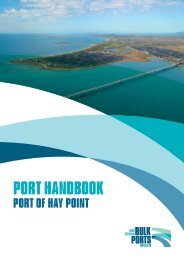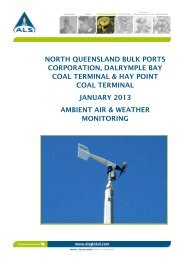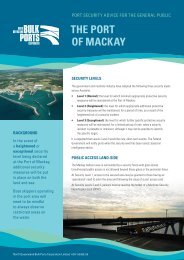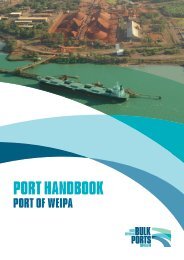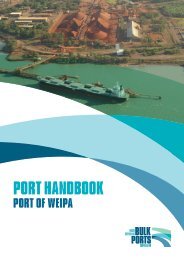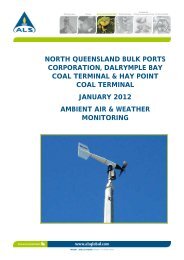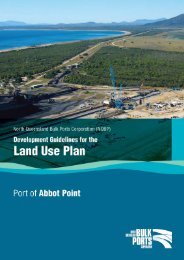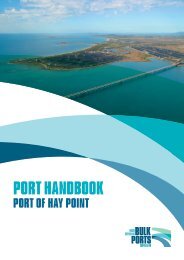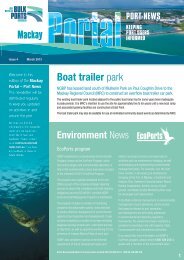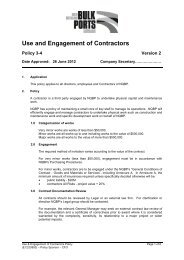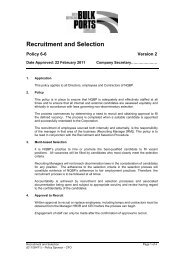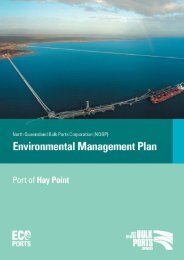Terms of Reference - North Queensland Bulk Ports Corporation
Terms of Reference - North Queensland Bulk Ports Corporation
Terms of Reference - North Queensland Bulk Ports Corporation
- No tags were found...
You also want an ePaper? Increase the reach of your titles
YUMPU automatically turns print PDFs into web optimized ePapers that Google loves.
• good representative examples <strong>of</strong> remnant REs or REs that are described as having‘medium’ or ‘low’ representation in the protected area estate as defined in theRegional Ecosystem Description Database (REDD) available atwww.derm.qld.gov.au• areas or features identified as state significant biodiversity values, pursuant to the<strong>Queensland</strong> Biodiversity Offset Policy (version 1) (Department <strong>of</strong> Environment andResource Management 2011a)• sites in, or adjacent to, areas containing important resting, feeding or breeding sitesfor migratory species <strong>of</strong> conservation concern listed under the Convention <strong>of</strong>Migratory Species <strong>of</strong> Wild Animals, and/or bilateral agreements between Australiaand other countries• sites adjacent to nesting beaches, feeding, resting or calving areas <strong>of</strong> species <strong>of</strong>special interest (e.g. turtles, dugong, dolphins and whales)• sites containing common species that represent a distributional limit• sites that contain feeding, breeding, resting areas for populations <strong>of</strong> ‘special leastconcern species’ as defined under the Nature Conservation (Wildlife) Regulation2006 (Qld)• areas which are important or potentially important as migratory corridors or forpopulation connectivity• sites <strong>of</strong> high biodiversity that are <strong>of</strong> a suitable size or with connectivity to corridors orprotected areas to ensure survival in the longer term; such land may contain:– natural vegetation in good condition or other habitat in good condition (forexample, wetlands)– degraded vegetation or other habitats that still support high levels <strong>of</strong> biodiversityor act as an important corridor for maintaining high levels <strong>of</strong> biodiversity in thearea• sites containing other special ecological values (e.g. high habitat diversity and areas<strong>of</strong> high endemism) including seagrass beds• ecosystems that provide important ecological functions such as:– wetlands <strong>of</strong> national, state and regional significance– coral reefs– riparian vegetation– important buffer to a protected area or important habitat corridor between areas• declared fish habitat areas and sites containing protected marine plants under theFisheries Act• protected areas that have been proclaimed under the NC Act or Marine Parks Act orare under consideration for proclamation• areas <strong>of</strong> environmental significance as defined by the <strong>Queensland</strong> Coastal Plan(Department <strong>of</strong> Environment and Resource Management 2012a)• areas <strong>of</strong> major interest, or critical habitat declared under the NC Act or high natureconservation value areas or areas vulnerable to land degradation under the VM Act.- 36 - Contents <strong>of</strong> the EISDudgeon Point Coal Terminals Project<strong>Terms</strong> <strong>of</strong> reference for an environmental impact statement



